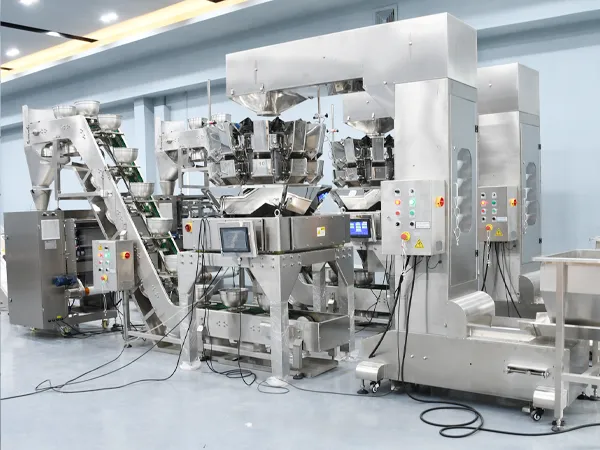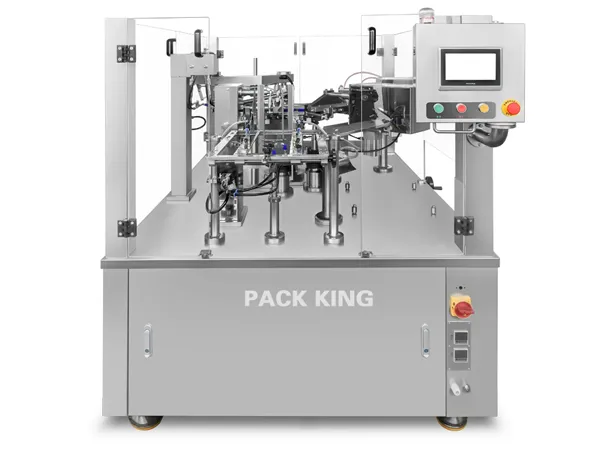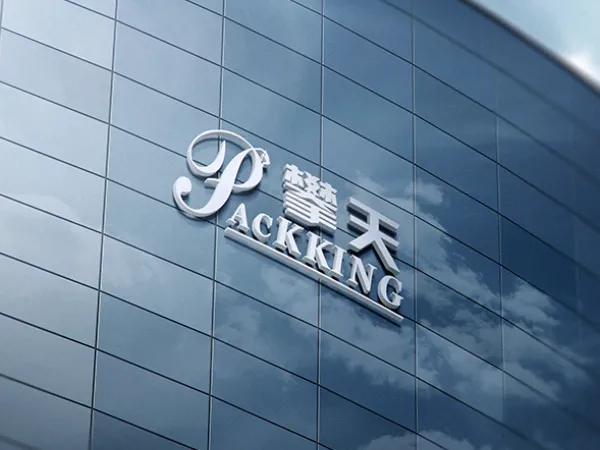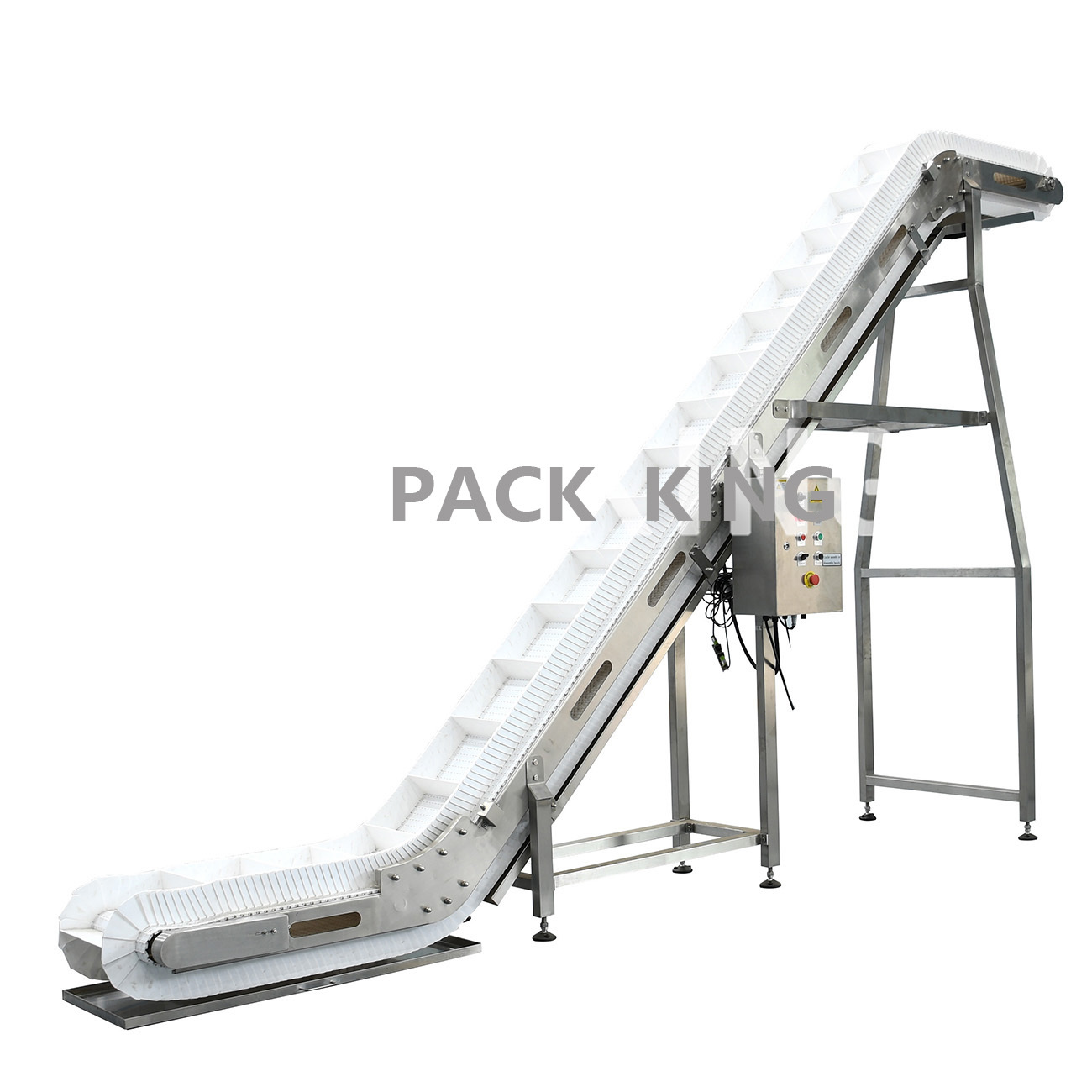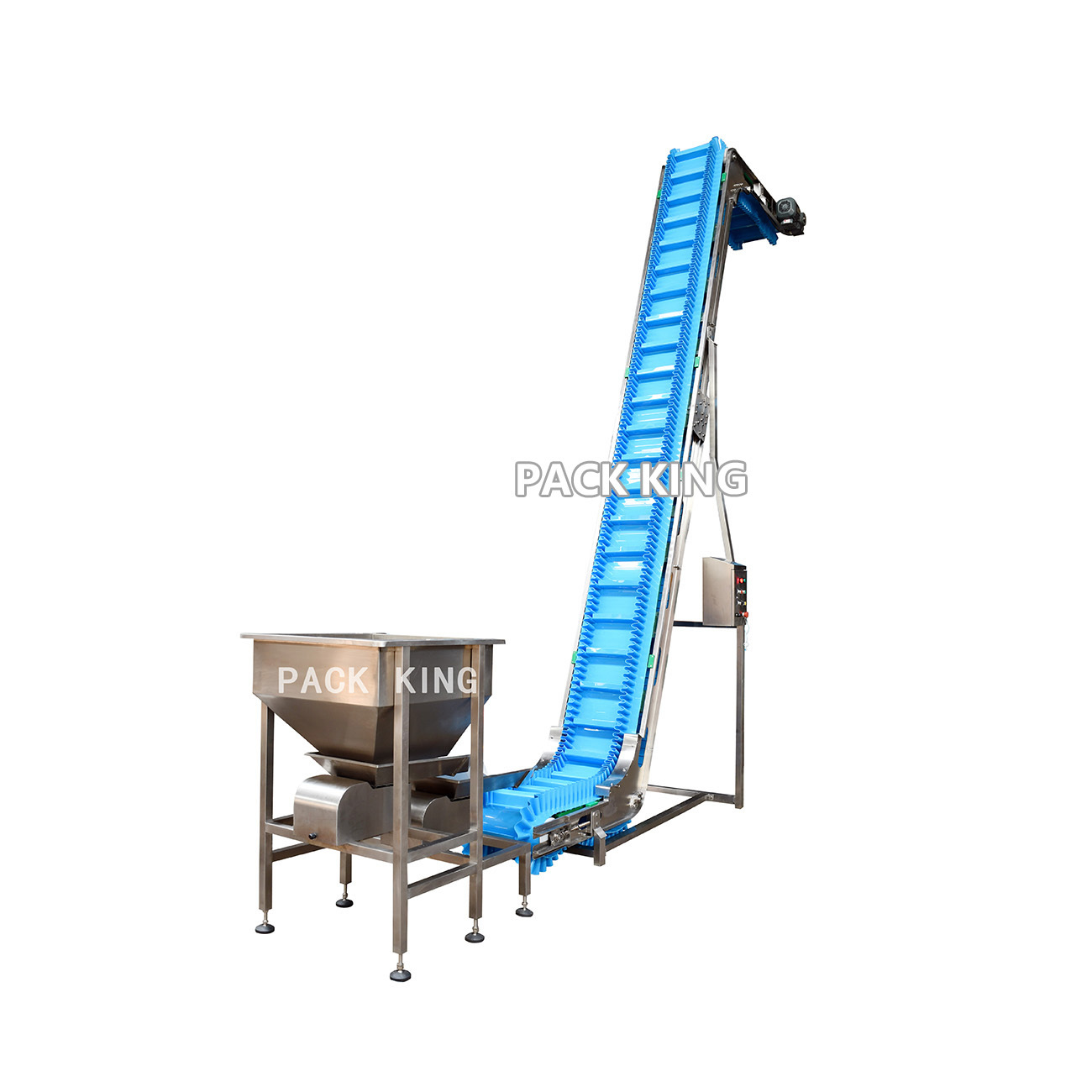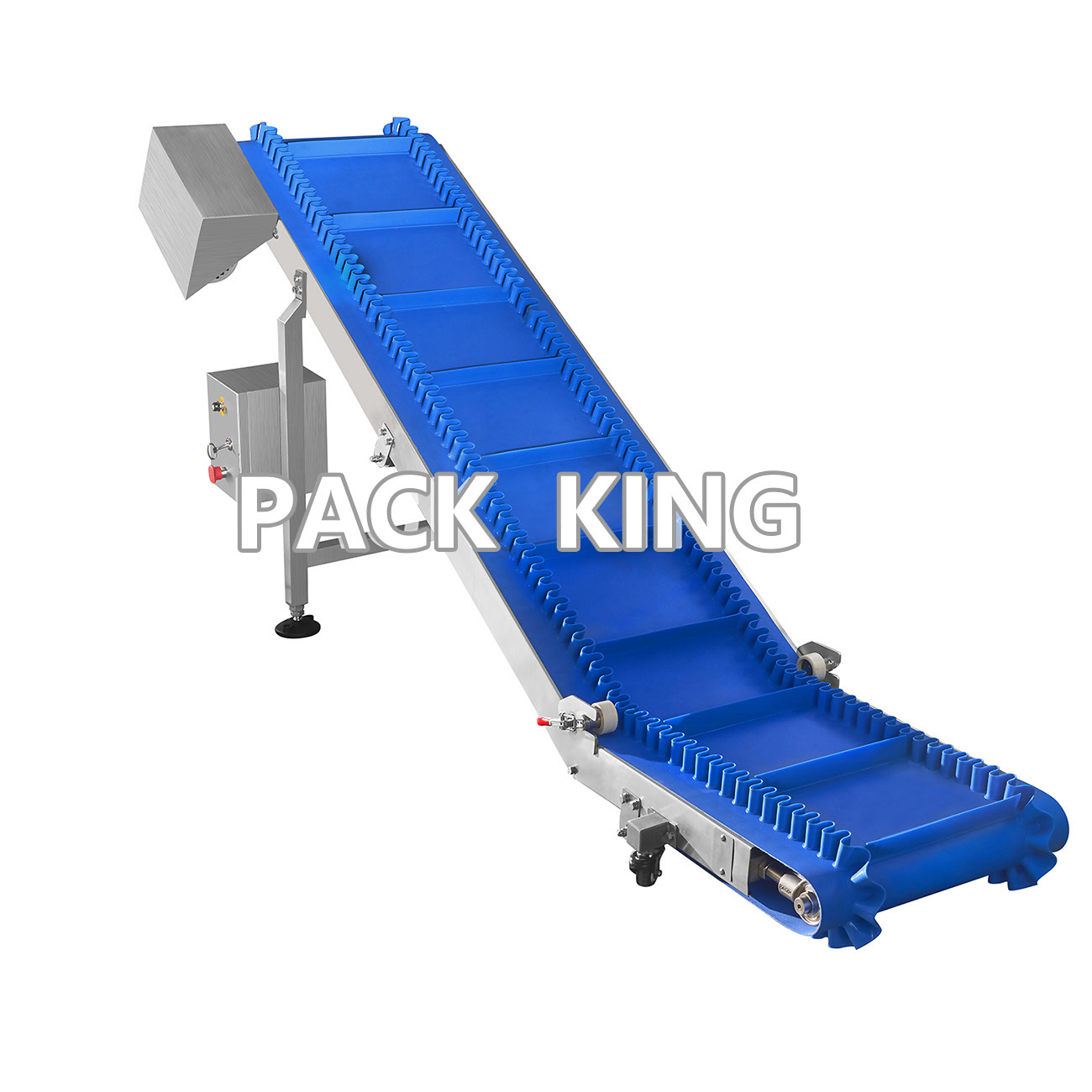Product Category
Features and Advantages *Large conveying angle: By setting special push plates and skirts, it can effectively prevent materials from sliding down, enabling large-angle conveying. The lifting angle can reach 30-40 degrees or even higher. When space and product shape permit, it can replace continuous elevators. *Strong bearing capacity: With a robust structure, it can be used in heavy-duty conveying operations and is suitable for occasions with impact at loading and unloading points. It can convey large and sharp materials, and the weight of a single material (piece) being transported can reach 70-120kg. *Wide application range: There are various chain plate materials available, which can be selected according to different material characteristics and usage environments. For example, stainless steel is suitable for industries with high hygiene requirements such as food and pharmaceuticals; plastic-steel chain plates are resistant to acid, alkali, salt water, etc., and can be used in various harsh environments. *Stable and reliable operation: Adopting chain transmission, it runs smoothly with low noise and little wear. The chain has undergone heat treatment, featuring good wear resistance and a long service life. Meanwhile, the equipment has good sealing performance, which can prevent material leakage and ensure the cleanliness of the production environment. Application Fields *Food industry: Used for conveying fruits, poultry, canned drinks, cosmetics and cleaning products, etc., and can meet the needs of automatic conveying, grading and packaging. *Chemical industry: Suitable for conveying various chemical raw materials, such as granular and powdery materials, and can operate stably in corrosive environments. *Mining industry: Can be used to convey ores, slag, etc., and can adapt to the harsh working environment of mines, especially suitable for conveying large and sharp materials. *Other industries: Also widely used in electronics, electrical appliances, automobile, logistics and other industries for conveying various parts, packaged items, etc.
MORECore Functions 1.Adapting to steep angle conveying It solves the problem that ordinary flat conveyor belts are prone to material sliding and low conveying efficiency when the inclination angle is large. Through special structural designs (such as transverse partitions, corrugated ribs, etc.), it can stably convey bulk materials on steep slopes or even in vertical directions, effectively reducing the floor area occupied by the conveying line. 2.Wear resistance and corrosion resistance Polyurethane material itself has excellent wear resistance, tear resistance, and chemical corrosion resistance. It can adapt to the conveying of various materials (such as ores, coal, grain, chemical fertilizers, construction waste, etc.), and is especially suitable for working conditions where the conveyor belt is subject to significant wear or certain corrosiveness. 3.Low noise and environmental friendliness Compared with traditional rubber conveyor belts or metal conveying chains, PU material is relatively soft, resulting in lower noise during operation. Moreover, the material itself is non-toxic and easy to recycle, meeting environmental protection requirements. It is suitable for places with strict restrictions on noise and environment (such as food processing, urban waste treatment, etc.). 4.Flexible adaptation and efficient conveying It can be designed with different structures such as rib heights and partition spacings according to the characteristics of the conveyed materials (particle size, humidity, temperature, etc.) and angle requirements, realizing continuous and efficient material conveying and improving the automation level of the production process. Main Application Fields 1.Mining and metallurgy industry Conveying ore raw materials such as coal, iron ore, and limestone. It is widely used in steep slope conveying scenarios in underground mines or open-pit mines, reducing the difficulty of laying conveying lines due to terrain restrictions. 2.Building materials and chemical industry Used for conveying materials such as cement, sand, glass raw materials, chemical fertilizers, and plastic particles. Its corrosion resistance and wear resistance make it suitable for the special conveying needs of chemical raw materials. Agriculture and grain processing 3.Conveying agricultural products such as grains, beans, and feed. The environmental friendliness and low noise characteristics of PU materials make them suitable for scenarios in contact with food, and can prevent materials from sliding during inclined conveying in storage and processing links. 4.Construction waste and waste treatment In scenarios such as demolition sites, landfills, and waste recycling plants, it is used to convey mixed materials such as construction waste and domestic waste. The steep angle design can save site space and improve processing efficiency. 5.Port and logistics conveying In the bulk material loading and unloading links of ports and stations, it is used to convey materials (such as coal, grain) from ships and trucks to storage facilities through inclined lines, enhancing the continuity of loading and unloading operations.
MOREFunction 1.Enabling stable conveying at large angles Ordinary conveyor belts are prone to material sliding and spilling when the inclination angle is large. However, the PVC steep angle conveyor belt, through a combined design of corrugated sidewalls (preventing lateral sliding of materials) and transverse partitions (supporting materials and forming a "hopper" structure), can firmly "lock" materials on steep slopes or even in vertical directions. This ensures that bulk or lumpy materials such as coal, ores, and grains do not fall off, enabling continuous and stable conveying. Saving space and reducing costs 2.Compared with traditional inclined conveying equipment (such as screw conveyors and bucket elevators), it can be directly arranged along steep angles, significantly shortening the length of the conveying line and reducing the floor area. It is particularly suitable for working conditions with narrow spaces (such as inside workshops and underground mines), lowering the costs of equipment installation and site construction. Utilizing the characteristic advantages of PVC materials Corrosion resistance: PVC materials have a certain resistance to acids, alkalis, salt spray, etc., and can convey materials with slight corrosiveness (such as chemical fertilizers and chemical raw materials), extending the service life of the conveyor belt. 3.Hygiene: Food-grade PVC steep angle conveyor belts can be used for conveying food-related materials such as grains and feed. Their surfaces are easy to clean and meet hygiene standards. Lightweight and low noise: PVC materials have low density, making the conveyor belt lightweight overall. The friction noise with equipment during operation is low, making it suitable for noise-sensitive environments (such as urban waste treatment stations and food processing plants). 4.Adapting to various materials and working conditions The structural parameters such as the height of sidewalls and the spacing of partitions can be adjusted according to the characteristics of materials (particle size, humidity, temperature) to adapt to materials of different forms such as dry powder, granules, and small lumps. It can also work stably in normal or medium-low temperature environments ranging from -10℃ to 60℃. II. Main Application Fields 1.Mining and coal industry Conveying ore raw materials such as coal, iron ore powder, and limestone. It is especially suitable for steep terrain in underground or open-pit mines, solving the problem that traditional conveyor belts cannot be arranged due to angle restrictions and improving the efficiency of material transfer in mines. 2.Construction and building materials industry In cement plants and sand and gravel factories, it conveys bulk building materials such as cement, sand, and crushed stones. It can lift materials from the ground to storage silos or mixing stations, saving the floor area of the conveying line in the factory area. 3.Agriculture and grain processing Conveying agricultural products such as grains, beans, and feed. Taking advantage of its hygiene and anti-spilling features, it realizes vertical or large-angle lifting in storage and processing links, reducing material loss. 4.Waste treatment and environmental protection industry Used for sorting and conveying urban domestic waste and construction waste. In places such as waste incineration plants and landfills, mixed waste is lifted to processing equipment through the large-angle design, saving site space. 5.Chemical industry and light industry Conveying chemical raw materials such as fertilizer granules and plastic particles. With the corrosion resistance of PVC materials, it adapts to mild chemical environments, and optimizes the layout of workshop production lines through large-angle conveying.
MORE
